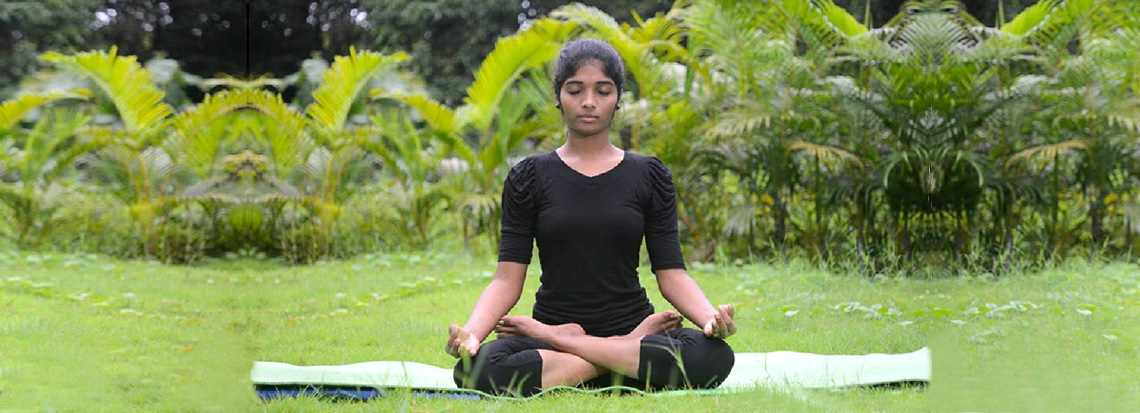PADMASANA(Lotus Pose)

Welcome to Ashtanga Yoga Collection Project!
At AYA, we are attempting to demystify any secrets and misgivings about Ashtanga Yoga.
The following article will try to provide comprehensive and neutral information from various subject-matter experts about Ashtanga Yoga Postures and Practices. We have called this 'Ashtanga Yoga Collection' Project. This project aims to become a ready-reckoner and a reference for yoga teachers and enthusiasts training in Ashtanga Vinyasa Yoga. Although it is not an open forum, we invite participation from Ajarya Teachers as also yoga teachers from all over the world. All your submissions will be reviewed by our panel before they are published online.
The Procedure:
- Sit comfortably on the floor with erect spine and legs stretched in front of your body.
- Slowly bend your one leg and place it on the opposite thigh.
- Sole of folded leg should face upward and the heel should touch the navel or be closer to pubic bone.
- Similarly fold the other leg and place it on the opposite thigh.
- Knees should touch the ground, spine and head should be erect in the final position.
- Position the hands on the knees in Jnana or Chin mudra.
- Relax the arms; elbows can be slightly bent and shoulder should not be raised or hunched.
- Close your eyes and relax the whole body.
- Make adjustments by moving your body forward or backward to experience balance and alignment.
- Perfect alignment indicates you are in complete Padmasana or Lotus Pose.
Benefits:
- Stretches and strengthens the hips, knees and heels.
- Improve body posture and spinal alignment.
- Calms the mind; increases concentration and awareness.
- Helps in sciatica and menstrual discomfort.
- Aids in flexibility of joints and ligaments, restores energy levels.
- Maintains relaxation, concentration and meditation that help in the attainment of Kundalini power.
- Brings feeling of comfort and effortlessness that soothes the nervous system.
Precautions:
- People with knee or ankle injury should avoid this asana (pose).
- People suffering from cramps of calf may practice it under the supervision of expert.
- If finding it difficult you may start with Ardha Pamasana (Half Lotus Pose).
Contributors to Padmasana
- The Lotus Pose has been demonstrated by Ms Niharika Raval, who is a part of Yoga Archanam Project at Surendranagar, Gujarat, India, pursuing PhD in Dance.
- The Padmasana Procedure has been provided by Sri Viral Raval, who is a part of Yoga Archanam Project at Surendranagar, Gujarat, India, pursuing PhD in Yoga
- The limitations and benefits of Padmasana been given by Ms Niharika Raval
- The Physiology of Padmasana been designed and provided by Dr E Amaravathi, a Master in Physiotherapy currently pursuing PhD in Yoga and also teaching at Ajarya Yoga Academy
- The Scientific Explanation and Clinical Significance (available only to registered Ajarya teachers) of Padmasana been provided by
Dr E Amaravathi,teaching currently at Ajarya Yoga Academy
Please write to us if you wish to become a Ajarya Contributor!